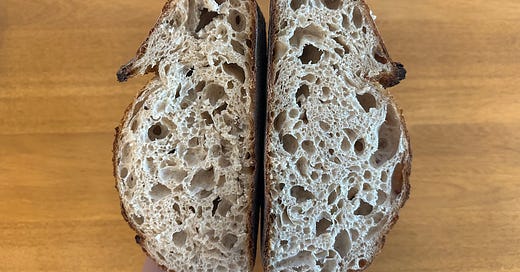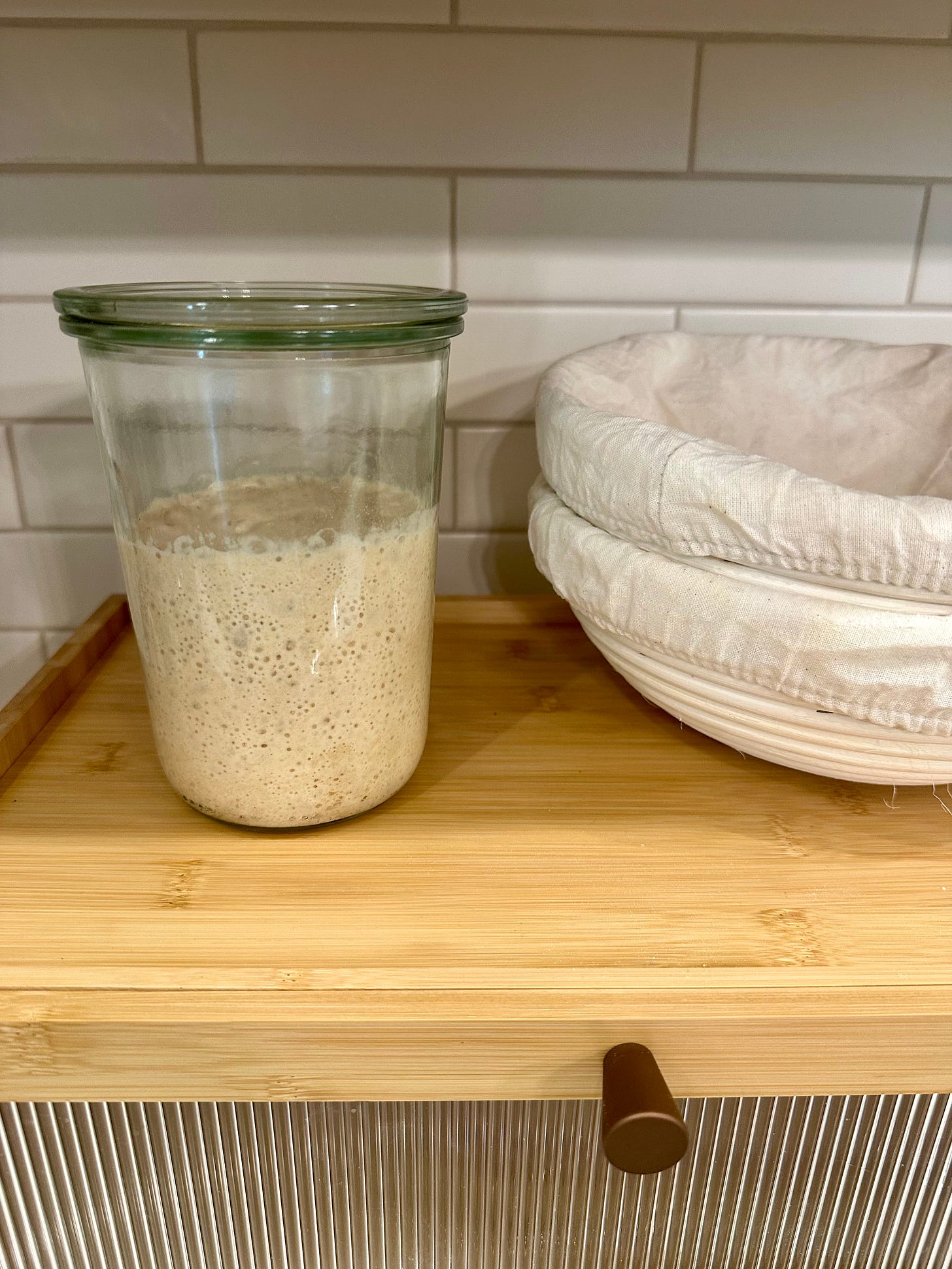Have you ever wondered what gives flour the ability to become bread? The answer is yeast. Yeast is what allows bread to rise, it’s a leavening agent. In this article I will be describing the difference between commercial yeast and wild yeast, also known as sourdough starter both of which, functionally are the same, but fundamentally are completely different in their nature.
What is yeast?
Let’s start by defining what yeast actually is. According to the Oxford Dictionary, Yeast is “a microscopic fungus consisting of single oval cells that reproduce by budding, and are capable of converting sugar into alcohol and carbon dioxide.” The way they convert sugar into alcohol and carbon dioxide is by consuming carbohydrates. To simplify it, yeast is a microorganism that consumes carbohydrates and produces two key things: alcohol that develops flavor, and carbon dioxide gas that makes baked goods rise. Yeast is used in baking as a leavening agent, in other words it gives bread the properties it needs in order to rise. This is where the similarities between commercial yeast and sourdough starter end because at their core, they are inherently different.
Commercial yeast
Commercial yeast, also known as baker’s yeast, is cultivated by isolating a single strain of the fungus saccharomyces cerevisiae. This strain is selected because of its ability to consistently produce gas, making it a reliable choice for baking. This strain is further engineered in the lab to enhance its capabilities to leaven bread and give it a specific flavor profile.
There are two types of baker’s yeast: fresh yeast and dry yeast (active dry yeast and instant yeast fall into this category). Fresh yeast, commonly known as compressed or cake yeast, is a block of highly perishable live yeast cells. It’s high in moisture, around 70%, and resembles a block of clay. This is preferred in commercial baking due to the sweet flavor and rich texture it produces. Dry yeast (yeast which has been dehydrated) comes in two forms: active dry and instant. These are what you would usually find at the grocery store. Active dry yeast needs to be mixed with water before it is used while instant yeast can be added to dry ingredients.
The result is a reliable, efficient and fast leavening agent. Bread made with commercial yeast usually has a soft chewy texture. This is why it is so widely adopted and used in many professional kitchens and homes. The big disadvantage is that since it is formulated in the lab it leaves us uncertain about its specific components. Other people, like myself, may have a reaction to commercial yeast, like bloating and asthma.
Wild yeast
Sourdough starter, or wild yeast, is cultivated by naturally occurring elements in the environment. It is not single strain but rather a multi strain species. This is what gives sourdough starter its complex, unpredictable, and often tangy flavor profile. When sourdough starter is used a leavening agent it’s much slower than commercial yeast and not as reliable, but that’s part of the fun. Each time you bake with sourdough starter you never produce the same bread twice. The temperature, the different fungal strains in the air (depending on the location you are in), the flour you use, are some of many factors that affect the flavor development and fermentation of the culture. If it’s too warm you will have faster fermentation, if it is cold, fermentation will slow down. Whole wheat flour will boost fermentation because of its increased nutrition thereby giving the starter more food to consume.
Bread baked with sourdough starter generally has a more open, aerated crumb, with irregular air pockets. These air pockets are produced by the gas released when carbohydrates are consumed by the starter and get trapped inside of the gluten structure. One significant advantage of sourdough starter is its slow fermentation process, which breaks down sugars in the dough over time. This results in bread that's easier on digestion compared to commercial varieties, as your body needs to process fewer starches and proteins. It also tends to have a lower glycemic index than bread made with commercial yeast and provides your gut with healthy bacteria.
Although commercial yeast does have some drawbacks it is a great place to start your baking journey if you’ve never baked before. It’ll produce a reliable loaf in a short amount of time and can give you that extra boost of confidence as a beginner baker. I still bake, though not very often, with commercial yeast, especially if I’m making a NY style pizza pie to get that authentic flavor. Otherwise I generally prefer to use my sourdough starter since I know exactly what went into feeding it and it is easier for me to digest.
What about you? Have you ever baked with sourdough starter or do you prefer commercial yeast? Maybe you’ve cultivated your own starter? Let me know more in the comments your experience and preference.







Great information! I have been working on my first starter and am excited to start using it soon!
I’ve been making loaves with wild yeast starter for many years now and your lovely piece describes the experience perfectly. I noticed that the flavour changed dramatically when I moved from eastern to western Canada—much more sour and pungent. It could be the flour is sourced differently but I’ve always wondered about regional variation of the yeasts. And it makes best pancakes. Thanks for sharing!